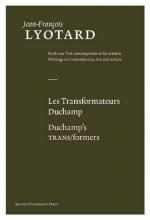|
This section contains 7,311 words (approx. 25 pages at 300 words per page) |

|
SOURCE: “The Letter and the Line: Discourse and Its Other in Lyotard,” in Diacritics, Vol. 14, No. 3, Fall, 1984, pp. 40-9.
In the following discussion of Discours, Dews explains the distinction Lyotard draws between the significations of words and the significantions of figures.
There is a certain irony, but also an appropriateness, in the fact that Jean-François Lyotard should only recently have become more widely known in the English-speaking world for his work on the “postmodern condition,” on the intersecting aesthetic, political, and ethical problems posed by modernity and its—supposed—exhaustion, and that this work has been presented as the latest contribution to a continuing poststructuralism. Irony, because if poststructuralism as a whole can be characterized by its avoidance of the moral dimension of politics, by its assumption—explicit in works such as Foucault's Discipline and Punish—that normative thought can only operate in the interests of power...
|
This section contains 7,311 words (approx. 25 pages at 300 words per page) |

|


